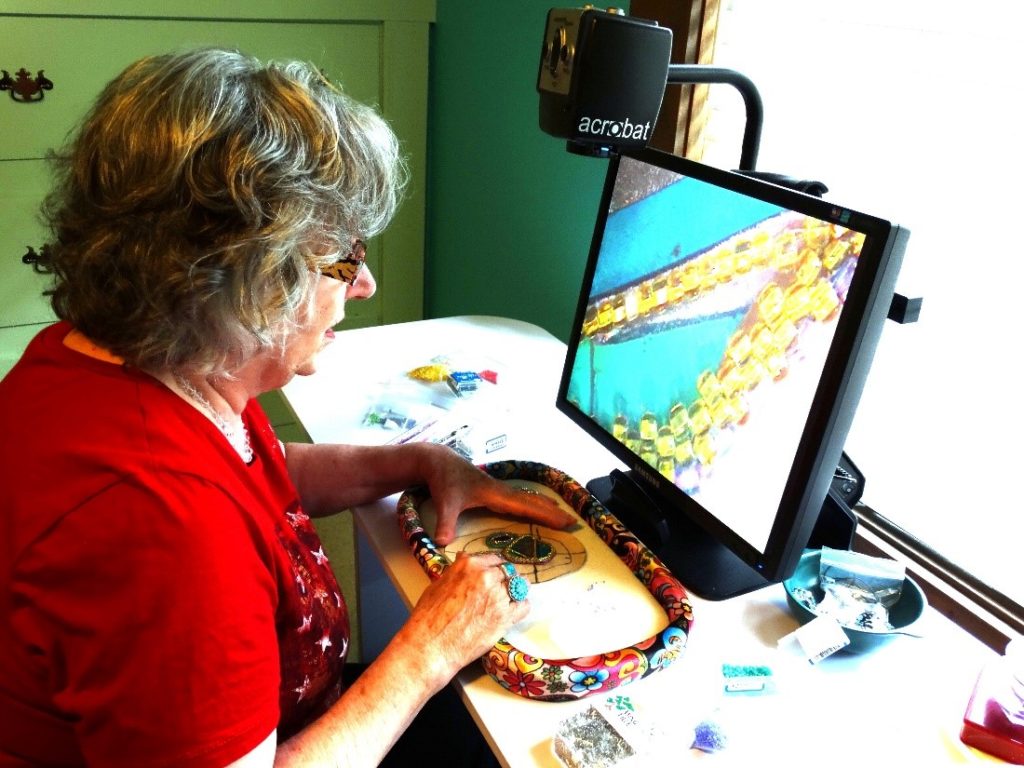Vision Rehabilitation Therapist (VRT) Appreciation Week is observed each year the week of Anne Sullivan’s birthday, on April 14, 1866. This year VRT Week will be observed the week of April 11-18, 2021. We all recognize Anne Sullivan as the Home Teacher who instructed Helen Keller on the skills she would later use as a world renown writer and lecturer. Sullivan’s profession, that of Home Teacher was the precursor of today’s Vision Rehabilitation Therapist, a professional who often provides the primary rehabilitation for individuals who are blind or have a vision loss that cannot be corrected with glasses or surgery.
VRTS Are a “Best Kept Secret”

Ironically, as well known as Anne Sullivan and Helen Keller’s story is, the VRT has been called “one of the best kept secrets,” for those experiencing a vision loss later in life from diseases like macular degeneration, glaucoma, diabetic retinopathy, etc. VRTs are most often found working for state and local agencies for blindness or low vision. Doctors may not refer patients to these resources (although referring low vision patients to vision rehabilitation is the current standard of care), and patients may not be aware of these services. Doctors, patients, and their family members may not realize that people with low vision can benefit from skills training and assistive technology available at these agencies, or may not know how to find them.
What VRTS Do
Like Anne Sullivan, present day VRTs can teach braille for creating household labels or for reading and writing. People with vision loss also may choose to learn how to use handheld and electronic magnifiers, smartphones and tablets with magnification and screen reading software. It is important to learn how to adjust to their vision loss and there is a wide variety of adapted daily living skills that can be learned for work, home and leisure to help during that process.

It is not uncommon for VRTs to also have vision impairments themselves, like Sullivan, putting themselves in the unique position to understand first-hand the challenges of working, managing a home, staying current with technology, and adjusting to a vision loss.
How to Find VRTS and Other Vision Rehabilitation Services
Fortunately, a doctor’s referral is not necessary to find or work with a VRT. Check out the APH Directory of Services or call the APH ConnectCenter toll free at 1-800-232-5463 to find a vision rehabilitation therapist or services near you. You may also find that there is no out-of-pocket fee for their services, or that they may be available on a sliding scale.
To learn more about vision rehabilitation therapists and their vital role, check out the Hadley Presents interview with VRTs, Kendra Farrow and Steve Kelley, “A Guide to Vision Rehab,” and Ed Haines presentation “The Vision Rehabilitation Therapist: Your Advocate for Independence;” or ask your smart speaker (Amazon Echo or Google Home) for “Vision Rehab Podcast on TuneIn.” For more facts about VRTs, ask Alexa to “Open Vision Rehabilitation Facts.”
“From Home Teacher to VRT”
New to Vision Loss?
Check out our Getting Started Kit and Getting Started Series